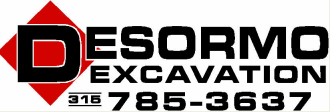A septic system processes and neutralizes liquid and solid waste that exits your home from toilets, sinks and other plumbing fixtures.
A conventional septic system consists of three main parts:
- Septic tank
- Distribution box
- Drain field
The Septic Tank
The septic tank is a temporary, watertight holding tank for waste, often buried near the house. Tanks usually have a capacity of 1,000 or more gallons. Tanks are made from concrete or plastic. We recommend concrete tanks unless installation is hindered by location then we install Roth Plastic Tanks.
Septic Drain Field
Multiple, gravel-lined trenches, usually 2-3 feet deep, where liquid that exits the tank flows. The drain field is positioned so that gravity allows liquid waste to flow and become distributed into the area. Perforated distribution pipes are placed in drain field trenches, ensuring that liquid waste can drain over a large area. The bottoms of the trenches are at least 12 inches above the groundwater table, sometimes more depending on the type of soil, so that waste is neutralized before entering. The drain field is covered with soil before the system is used. The average drain field is 200 feet but will vary according to location and ground conditions.
The Soil
Natural components of soil neutralize bacteria and chemicals before they reach groundwater or nearby rivers and lakes. The ideal soil is aerobic, meaning it contains a good amount of cleansing oxygen, and is not saturated with water.
Septic System Variations
Some septic systems are more expensive than the one described above, but they allow you to build on a piece of land that might not be suitable for a conventional septic system. For instance, waste might need to be pumped to the drain field, rather than entering it from a gravitational drain. These systems are called raised bed systems. Other systems that are engineered for use near bodies of water are the Elgen Bio Mat systems.
If You’re Buying Land
Always make your purchase of an undeveloped piece of land without sewer connections contingent on obtaining a permit to install a septic system. There are some soils that are not suitable for any type of system. Ask your real estate agent which government agency regulates systems in the area where you plan to build. If you are purchasing a house already on a septic system, ask for any information about the original septic system, since it should show you the location of the tank and drain field.
If you are purchasing land, feel free to call us for a consultation about any concerns you may have regarding septic system installation.
Information About Private Septic Tank Systems
We sometimes work with home buyers who are reluctant to consider a house that is not connected to a community sewer. Some have heard horror stories about problems with old-fashioned septic systems. Others are totally unfamiliar with the concept of private waste removal. Although you should inspect them prior to purchase, most modern septic systems function in a clean and efficient manner now that regulatory agencies closely monitor their design and installation.
